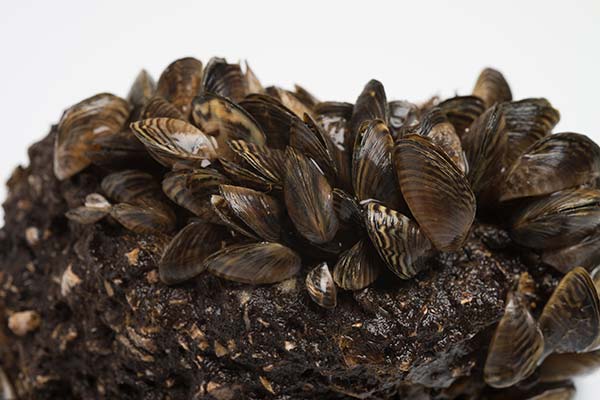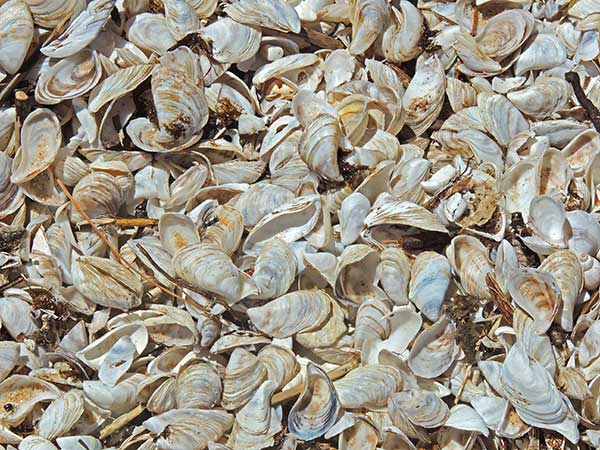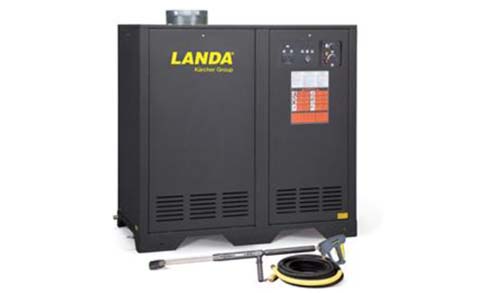Royce Industries is the leader in providing products to help combat AIS. Take a look at our watercraft decontamination products and tools and contact R. Calvin Rasmussen for special pricing available for AIS Products.

Don’t Move A Mussel! Royce helps fight invasive aquatic species
Royce Industries is leading the charge against Aquatic Nuisance Species, also known as Aquatic Invasive Species. These species, both the Quagga and Zebra Mussels pose a significant threat to infrastructure, economies, recreation and ecosystems.
Adult mussels attach to water intakes, marina structures, boat hulls, and engines requiring expensive decontamination and repair. Larva, or veligers, are drawn into ballast tanks and boat engines where, if the water is not drained, the larva will grow into adults and damage recreational equipment. quagga mussels feed by continuously filtering water, up to one liter of water per day, which can deprive other native aquatic species of resources necessary for survival, causing irreversible ecosystem changes, and loss of all native species. The spread of quagga-mussels cost millions of dollars by clogging engines and encrusting boats and facilities, disrupting the food chain, disrupting sport fishing, and littering beaches with sharp smelly shells. Royce Industries is the leader in providing water craft decontamination tools and trailers for outdoor enthusiasts throughout the western half of the United States.


Next Steps: What is being done in response to the spread of Quagga – Zebra mussels?
Federal and State agencies continue to develop unified responses; the principal agencies include the State’s Department of Fish and Game, Wildlife Resources, Water Resources, Food and Agriculture, Boating and Waterways, and Parks and Recreation, along with U.S. Fish and Wildlife, National Park Service and Bureau of Reclamation, and multiple local authorities.
Actions include:
Increased inspections and decontamination stations at Ports of Entry, Agriculture Border Stations, Rest Areas and etc.; Training and deployment of survey teams to inspect water bodies; Development and implementation of monitoring plans for high risk waters; Training of wardens, biologists and other agencies’ staff to conduct inspections; Purchase and deployment of portable decontamination stations; Developing plans for eradicating quagga mussels; Public information and education efforts including direct mailings to boat owners, posting of notifications at water bodies and along roadways, distribution of informational cards at multiple locations and media efforts; Boat inspection and decontamination training program that is offered throughout the Western United States. In 2007, the Department of Fish and Game through the Pacific States Fisheries Management Council trained its wardens and biologists about inspection and offered the training to other state and local agencies. As of May 2017, more than 4000 people have been trained to conduct inspections and decontaminations.

Royce’s involvement in the area of AIS movement began in early 2008 shortly after the presences of Quagga Mussels were discovered in Lake Mead. Immediately following their discovery in Lake Mead; Utah, Idaho and Colorado began their “Don’t Move a Mussel” and “Stop Aquatic Hitchhikers!” prevention efforts. Since Royce has business operations in each of these states, it became clear that their participation in this movement was paramount.


Royce President R. Calvin Rasmussen has participated in 60+ Watercraft Inspection Training (WIT) Seminars since 2013
Although many of Royce’s staff have been crossed trained in all things AIS, it has been and will continue to be Calvin that leads this charge. The following are a few details regarding Calvin’s efforts to serve these programs:
- 4 WIT I = Watercraft Inspection Training Level One (Watercraft Inspection) 2 Days
- 6+ WIT II = Watercraft Inspection Training Level Two (Watercraft Decontamination) 3 Days
- 2+ WIT III = Watercraft Inspection Training Level Three (Train the Trainer) 4 Days
The WIT Training Sessions are coordinated by “Quagga D Davis” in conjunction with the Pacific States Marine Fisheries Commission (PSMFC)
Participants who include wardens, biologists and other agencies’ staff from all over the United States and Canada west of the “100th Meridian” participate in these WIT 2-4 day training sessions. At each of these training sessions Royce Industries sponsors lunch, training materials and instruction which includes the use of the traveling “Water Decontamination Training Unit.” As you will see, this features the Landa ECOS 7000 w/AIS Modifications.
Additionally each participant receives:
- ECOS Helping to stop the spread of Zebra-Quagga Mussels (Available Upon Request)
- ECOS Literature (Available Upon Request)
- ECOS Trailer RFQ Specs (Available Upon Request)
- ECOS Sales Training (Available Upon Request)
- Royce Welcome Kit (includes Business Card, Pocket Knife and Personal Protective Equipment)

R. Calvin Rasmussen is a Panelist and Contributor to the Uniform Minimum Protocols and Standards (UMPS) for Inspection and Decontamination Programs for Dreissenid Mussels in the Western United States
Working closely with “Quagga D Davis”, Leah Elwell (Invasive Species Action Network) and Stephen Phillips (Pacific States Marine Fisheries Commission), Calvin was able to successfully introduce the Landa ECOS 7000 w/AIS Modifications into the most recent iteration of the UPMS Version III Revised September 2016. This has resulted in the delivery of 20+ ECOS over the past 18 months. If you would like more details regarding this please contact us.
Technical Committee Member and AIS Liaison of The Cleaning Equipment Trade Association’s (CETA)
In all of our WIT II & III Training sessions, Calvin takes the opportunity to educate the participants on the importance of spec’ing / demanding “CETA Certified Manufacture & Distributor” which will aid the agency in receiving equipment that will assuredly meet their spec. If you would like more details regarding this please let us know.
Technical Committee Member and Contributor to the T-32 AIS Technical Report of the American Boat & Yacht Council (ABYC)
In order to best contain and prevent the spread of AIS, it is paramount that multiple industries such as AIS, ABYC, CETA and more come together and homogenize their approach in developing Best Management Practices. If you’re interested in specific examples regarding Royce Industries efforts heretofore, please let us know.






